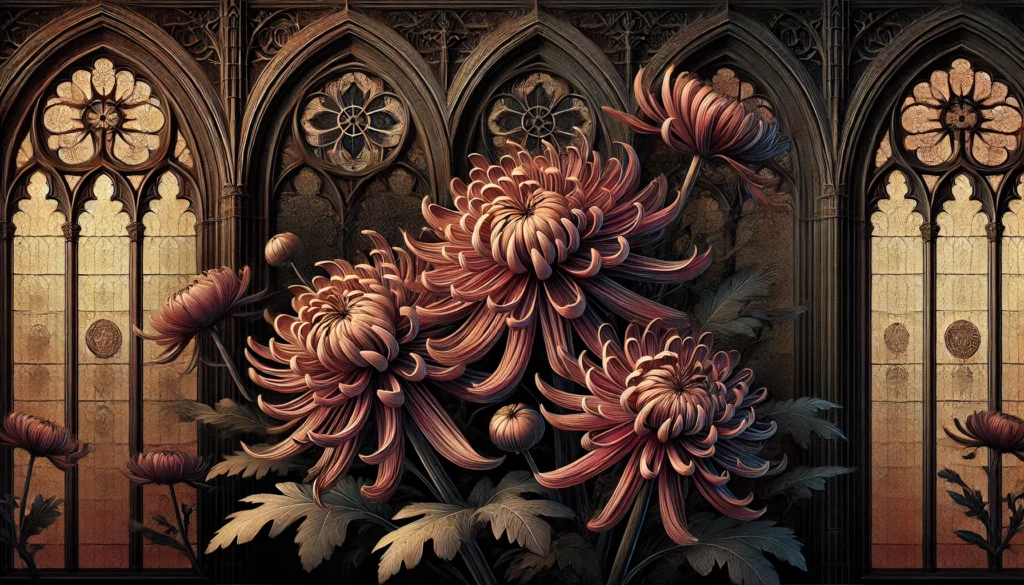

Home » Cat Plants » The Dangers of the Mums Flower Plant to Cats

Chrysanthemums, commonly known as mums, are popular flowering plants often found in gardens and floral arrangements. While these vibrant blooms add beauty to our surroundings, they can pose a significant risk to our feline companions. Cats are not allergic to mums in the traditional sense, but these plants are highly toxic to cats when ingested.
Mums contain several poisonous compounds, including pyrethrins, sesquiterpene lactones, and essential oils, which can cause serious health issues in cats. These plants are commonly found in outdoor gardens, potted plants, and cut flower bouquets.
Ingestion may cause mild gastrointestinal upset, but is generally not life-threatening.
Ingestion can result in mild symptoms like vomiting, diarrhea, or drooling. Rarely fatal but may require veterinary care.
Eating these plants can lead to more pronounced symptoms like abdominal pain, lethargy, or difficulty breathing. Veterinary intervention may be necessary.
Ingesting even small amounts can cause severe symptoms like organ damage, seizures, or cardiac failure without rapid treatment.
All parts of these plants are extremely poisonous to cats and can quickly lead to death, even with immediate veterinary care.
** Please note: Please note that toxicity level can vary based on the amount ingested and the specific cat. It's always best to keep these plants completely inaccessible to cats and seek immediate veterinary care or call the poison hotline if you suspect your cat has ingested any part of a toxic plant.
If your cat has ingested any part of a chrysanthemum plant, it is crucial to watch for signs of toxicity. Symptoms may appear within a few hours of ingestion and can range from mild to severe, depending on the amount consumed. Common symptoms of chrysanthemum poisoning in cats include:
In severe cases, chrysanthemum toxicity can lead to tremors, seizures, and even death if left untreated.
If you suspect your cat has ingested chrysanthemums, it is essential to seek veterinary care immediately. Your veterinarian will perform a thorough examination and may follow these steps to diagnose and treat your cat:
For more information on the diagnosis and treatment of plant toxicity in cats, visit the ASPCA Animal Poison Control Center.

A: If a cat eats mums, it can experience gastrointestinal upset such as vomiting and diarrhea. In severe cases, the cat may also suffer from central nervous system issues, requiring immediate veterinary care.
A: The most toxic flower to cats is the lily, which can cause kidney failure if ingested. Other dangerous plants include chrysanthemums, which also pose serious risks to feline health.
A: Treating Chrysanthemum poisoning in cats involves supportive care, such as providing fluids and medications to manage symptoms like vomiting. In severe cases, hospitalization may be necessary to ensure the toxins are flushed from the body.
A: Mums are not safe for pets, including cats, dogs, and horses, as they contain toxins that can cause vomiting, diarrhea, and skin irritation. It is essential to keep these plants out of reach of animals to prevent accidental ingestion.
A: Yes, chrysanthemums are toxic to both cats and dogs, as they contain chemicals like pyrethrins that can cause serious health problems. Symptoms may include gastrointestinal distress, hypersalivation, and even seizures if large quantities are ingested.
A: Flowers like roses, orchids, and sunflowers are generally safe for cats and do not contain harmful toxins. However, it’s always best to monitor your cat around plants to avoid any potential health risks.
Chrysanthemums, belonging to the family Asteraceae, have a rich history dating back to ancient times. Native to Asia and northeastern Europe, these flowers have been cultivated for over 2,000 years in China, where they were initially grown for their medicinal properties. In the 8th century AD, chrysanthemums were introduced to Japan, where they became a symbol of the Imperial family and were featured on the Imperial Seal.
The plant’s popularity spread to Europe in the 17th century and later to the United States in the 19th century. Today, chrysanthemums are widely grown for their ornamental value and are a popular choice for gardens, potted plants, and cut flowers.
Please note: The information shared in this post is for informational purposes only and should not be considered as veterinary medical advice.
🐾 A hilarious or heart-melting cat video
🐾 Our latest paws-on review of a cool cat toy